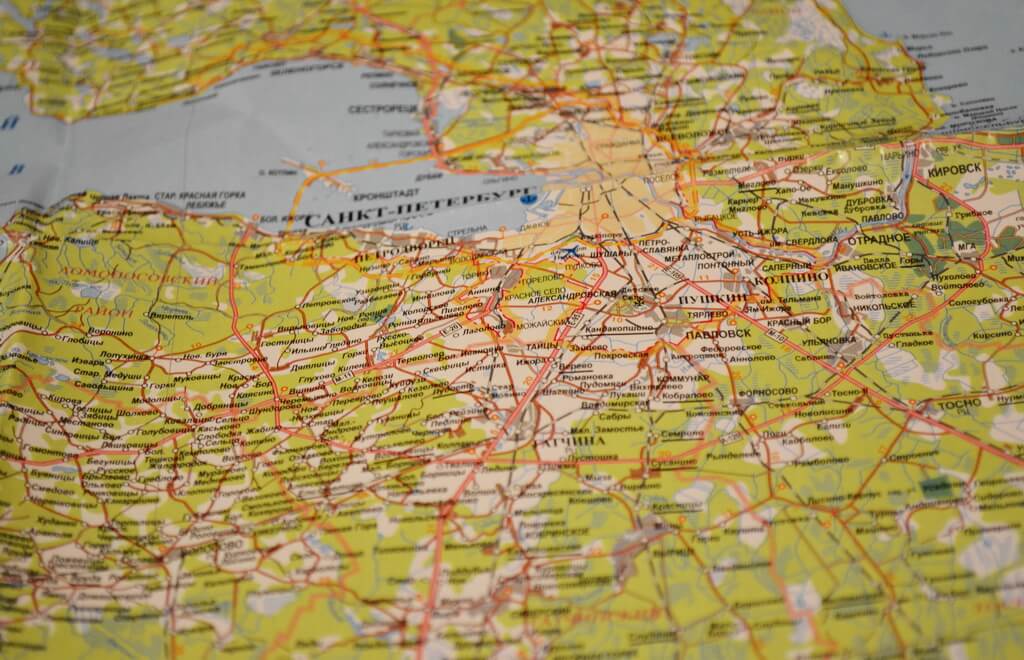With this post we are going to bring clarity to some geography aspects regarding St. Petersburg, the Leningradskaya oblast and other nearby regions, so that you have no chance to get confused; as well as get into trouble in areas which foreigners are not normally allowed to visit.
Russia’s Administrative Organization
At first, let’s look at how Russia is administratively laid out. The country has 85 regions of different types:
— oblast’;
— republic;
— autonomous district;
— krai;
— autonomous oblast’;
— three federal cities — Moscow, St. Petersburg and Sevastopol.
They differ in details which are not important for your travel.
There are two ways to name a Russian region in English. For example:
— the Republic of Karelia or the Karelia region;
— the Pskovskaya oblast’ or the Pskov region;
— the Primorskiy krai or the Primorsk region.
So What’s The Leningradskaya Oblast’ And Why It’s Important For You To Know This
The Leningradskaya oblast’ (the Leningrad region, the Leningrad oblast) is a region surrounding St. Petersburg (red border on the map below). These are two different regions: St. Petersburg and the Leningradskaya oblast’ with their own governors, parliaments and phone codes.
Map or the Leningrad region
Some travel guides and even locals often write that the city of St. Petersburg is located in the Leningrad region. It’s not the case.
A lot of sightseeings and suburbs and townships which are often thought to be in the Leningradskaya oblast are officially parts of St. Petersburg. And vice versa.
Which townships and landmarks are in St. Petersburg
— Kronstadt;
— Lomonosov and its Oranienbaum museum complex;
— Peterhof with its fountains;
— Strel’na with the Russian president’s residence the Konstantinovsky palace;
— Pushkin (Tsarskoe Selo);
— Pavlovsk;
— some other settlements of lesser attractiveness like Kolpino, Krasnoe Selo, Zelenogorsk and Sestroretsk.
Which towns of tourist interest are in the Leningrad region
— Vyborg;
— Gatchina;
— the Lomonosov district (the district around the town of Lomonosov, which is in St. Petersburg);
— Ivangorod;
— Tikhvin;
— Priozersk.
Note that the archipelago of Valaam with its Valaam monastery is in the Republic of Karelia. A city of Novgorod is the capital of the Novgorod region, a city of Pskov is the capital of the Pskov region.
So, why you should know what’s the Leningrad region and where its borders are? It’s important for those coming to Russian with an e-visa. Such a visa is issued for visiting only St. Petersburg and the Leningradskaya oblast’. You are forbidden to go with it to Karelia, Novgorod and Pskov and whichever other regions.
When travelling to another region, you’re typically required to show your passport to buy a ticket. The only exception is a trip to Gatchina from St. Petersburg by bus as it’s written in our post. To go to any suburb within St. Petersburg, be it Tsarskoe Selo, Kronstadt, etc., you don’t need a passport (though it’s recommended to have with oneself).
Another important point: the Leningrad region as a boundary area (the region borders with Estonia and Finland has areas with limited access for foreigners.
For now, all areas close to the state boundary are forbidden for free visiting by foreigners. Visiting two towns requires a special permission from the Russian Security Service (FSB):
— Sosnoviy Bor;
— Ivangorod (though you can freely go via Ivangorod without a stop there on your way to Estonia or vice versa).
